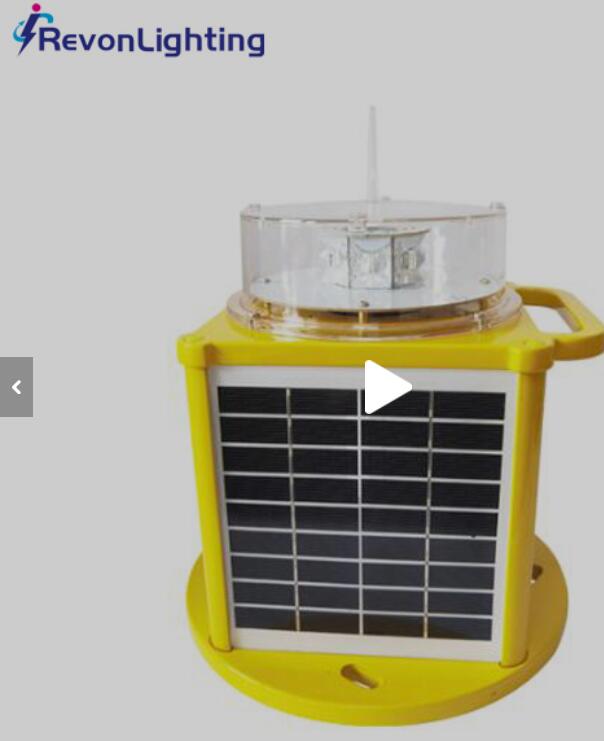Solar LED Marine Lanterns: Innovating Maritime Safety and Sustainability
Solar LED marine lantern is a groundbreaking advancement in maritime navigation, merging the efficiency of LED technology with the sustainability of solar power. These innovative lanterns offer numerous benefits over traditional lighting systems, enhancing safety, reducing environmental impact, and providing reliable illumination in diverse maritime settings. This article explores the technology behind solar LED marine lanterns, their advantages, applications, and future prospects.
The Technology Behind Solar LED Marine Lantern
Solar LED marine lanterns combine three core technologies: solar energy harvesting, energy-efficient LEDs, and advanced battery storage systems. Each of these components plays a critical role in the overall functionality and performance of the lanterns.
Solar Panels: High-efficiency photovoltaic panels are integrated into the lanterns to capture sunlight during the day. These panels convert solar energy into electrical power, which is stored in rechargeable batteries. Modern solar panels are designed to maximize energy capture even in low-light conditions, ensuring consistent performance across different weather patterns.
LED Lighting: Light Emitting Diode (LED) technology is known for its energy efficiency, longevity, and bright illumination. LEDs produce light through electroluminescence, a process that generates minimal heat compared to traditional incandescent or halogen bulbs. This efficiency allows LEDs to provide strong, focused light while consuming significantly less energy, making them ideal for use in solar-powered systems.
Battery Storage: Rechargeable batteries, typically lithium-ion, store the energy collected by the solar panels. These batteries are designed to endure multiple charge-discharge cycles, providing reliable power to the LEDs during nighttime or periods of low sunlight. Advanced battery management systems ensure optimal performance and longevity, reducing maintenance requirements.
Advantages of Solar LED Marine Lantern
The adoption of solar LED marine lanterns offers several key advantages, making them the preferred choice for modern maritime navigation and lighting needs.
Energy Efficiency: Solar LED marine lanterns harness renewable energy from the sun, eliminating the need for grid power or fuel-based generators. This not only reduces operational costs but also minimizes the carbon footprint associated with maritime lighting.
Longevity and Durability: LEDs have a significantly longer lifespan than traditional bulbs, often lasting upwards of 50,000 hours. Coupled with robust construction materials like stainless steel and weather-resistant plastics, solar LED marine lanterns are built to withstand harsh marine environments, including saltwater corrosion, wind, and physical impacts.
Low Maintenance: The combination of solar power and LED technology results in low maintenance requirements. The absence of moving parts and the durability of LEDs reduce the need for frequent replacements and servicing. This is particularly advantageous in remote or hard-to-reach maritime locations.
Environmental Impact: By utilizing solar energy and eliminating the need for fuel, solar LED marine lanterns contribute to a reduction in greenhouse gas emissions and pollution. Additionally, the use of recyclable materials and sustainable manufacturing practices further enhances their environmental benefits.
Enhanced Visibility and Safety: Solar LED marine lanterns provide bright, consistent illumination, which is crucial for navigation and safety at sea. Their ability to emit different colors and light patterns allows for clear signaling and identification of navigational aids, reducing the risk of maritime accidents.

Applications of Solar LED Marine Lanterns
Solar LED marine lanterns are versatile and can be used in a wide range of maritime applications, each critical to ensuring the safety and efficiency of marine operations.
Navigational Aids: These lanterns are commonly used in lighthouses, buoys, and beacons to mark safe passage routes, hazards, and harbor entrances. Their bright, reliable light helps mariners navigate safely, even in challenging conditions.
Offshore Installations: Oil rigs, wind farms, and other offshore structures use solar LED marine lanterns to indicate their presence and warn passing vessels. These lights play a crucial role in preventing collisions and ensuring safe operations.
Marine Research and Environmental Monitoring: Solar LED lanterns are used in marine research stations and environmental monitoring buoys. They provide essential lighting for researchers and ensure the visibility of monitoring equipment.
Emergency and Disaster Response: In disaster response scenarios, solar LED marine lanterns can be quickly deployed to provide lighting in affected areas. Their independence from grid power makes them invaluable during power outages and in remote locations.
| solar led marine lantern | solar led marine lanterns |
| 45 | 55 |
The Future of Solar LED Marine Lanterns
The future of solar LED marine lanterns looks promising, with ongoing advancements in technology poised to further enhance their performance and sustainability. Here are some trends and developments to watch for:
Improved Solar Efficiency: Advances in photovoltaic technology are continually increasing the efficiency of solar panels. Future solar LED marine lanterns will be able to capture and store more energy, even in less than optimal conditions.
Smart Technology Integration: The integration of smart technology will enable remote monitoring and control of solar LED marine lanterns. This capability will allow for real-time adjustments to light patterns, intensity, and operational status, optimizing their performance based on environmental conditions and maritime traffic.
Enhanced Battery Storage: Developments in battery technology, particularly in energy density and charging efficiency, will extend the operational life of solar LED marine lanterns. Improved batteries will provide longer-lasting illumination and better performance in diverse climates.
Sustainability Innovations: As the focus on sustainability grows, manufacturers are likely to adopt more eco-friendly materials and production processes. This will further reduce the environmental impact of solar LED marine lanterns and promote a circular economy.
Conclusion
Solar LED marine lanterns represent a significant advancement in maritime navigation and safety. By harnessing the power of the sun and the efficiency of LED technology, these lanterns offer a sustainable, reliable, and cost-effective solution for a wide range of marine applications. Their energy efficiency, longevity, low maintenance, and environmental benefits make them an ideal choice for modern maritime operations. As technology continues to evolve, solar LED marine lanterns are set to play an increasingly vital role in ensuring safe and sustainable navigation, illuminating the future of maritime travel and operations.
